Performance Assessment of Self-Healing Polymer-Modified Bitumens by Evaluating the Suitability of Current Failure Definition, Failure Criterion, and Fatigue-Restoration Criteria
Abstract
:1. Introduction
- To assess if the current failure definition, failure criterion, and fatigue performance analysis can simulate the SHE-modified bitumen behavior. If some inadequacies are found, convenient adjustments will be proposed.
- To evaluate if the current percent healing analysis framework can suitably accommodate the healing capability of SHE-modified asphalt binder. If some inadequacies are found, convenient adjustments will be proposed.
2. Materials and Methods
2.1. Materials
2.1.1. Neat Asphalt Binder
2.1.2. Self-Healing Elastomer
2.2. Methods
2.2.1. Preparation of STPUB
2.2.2. Aging Procedure
2.2.3. Performance Grade (PG) Characterization
2.2.4. LAS Test and S-VECD
2.2.5. LASH Test and S-VECD
3. Results
3.1. Failure Definition Assessment
3.2. Failure Criterion Assessment
3.3. Percent Restoration and Fatigue Analysis
New Parameters to Evaluate Bitumen Restoration and Fatigue Performance
4. Discussion
5. Conclusions
- Maximum stored PSE and × N failure definitions exhibited excellent capacities to accommodate the fatigue life of NA and SHE-modified bitumens. As well, both failure definitions identified STPUB1.0 with the highest fatigue performance increment (67.1%) with respect to NA.
- The (TRPSE)— failure criterion was the only one able to show a high efficiency (R2 up to 0.999) to predict and simulate asphalt binder fatigue life under different test conditions.
- Current restoration analysis framework was unable to fully accommodate %Rs and fatigue behavior of the SHE-modified asphalt binder.
- It was proved that higher %Rs did not ensure superior fatigue performance.
- It was proved that a greater number of loading cycles to failure () did not guarantee better fatigue performance.
- A new procedure (with new parameters) was proposed to assess the restoration and fatigue performance of asphalt materials, at the same time. It showed suitable results, but more experiments are needed. Besides, the new procedure identified STPUB1.0 with the greatest percent restoration efficiency up to 154.02%.
- According to the experimental data in this study, the SHE optimum content in NA was equal to 1%.
- Stored PSE is a factor with a high influence on bitumen fatigue performance.
Supplementary Materials
Author Contributions
Funding
Institutional Review Board Statement
Informed Consent Statement
Data Availability Statement
Acknowledgments
Conflicts of Interest
References
- Wang, C.; Xie, W.; Chen, Y.; Diab, A.; You, Z. Refining the Calculation Method for Fatigue Failure Criterion of Asphalt Binder from Linear Amplitude Sweep Test. J. Mater. Civ. Eng. 2018, 30, 04017286. [Google Scholar] [CrossRef]
- Underwood, B.; Baek, C.; Kim, Y. Simplified viscoelastic continuum damage model as platform for asphalt concrete fatigue analysis. Transp. Res. Rec. J. Transp. Res. Board. 2012, 2296, 36–45. [Google Scholar] [CrossRef]
- Moreno-Navarro, F.; Ayar, P.; Sol-Sánchez, M.; Rubio-Gámez, M.C. Exploring the recovery of fatigue damage in bituminous mixtures at macro-crack level: The influence of temperature, time, and external loads. Road Mater. Pavement Des. 2017, 18, 293–303. [Google Scholar] [CrossRef]
- Babadopulos, L.F.d.A.L.; Orozco, G.; Sauzéat, C.; Di Benedetto, H. Reversible phenomena and fatigue damage during cyclic loading and rest periods on bitumen. Int. J. Fatigue 2019, 124, 303–314. [Google Scholar] [CrossRef]
- Motamed, A.; Bhasin, A.; Izadi, A. Evaluating Fatigue-Cracking Resistance of Asphalt Binders in a Standardized Composite Using Continuum Damage Theory. J. Mater. Civ. Eng. 2013, 25, 1209–1219. [Google Scholar] [CrossRef]
- Safaei, F.; Castorena, C.; Kim, Y.R. Linking asphalt binder fatigue to asphalt mixture fatigue performance using viscoelastic continuum damage modeling. Mech. Time-Depend. Mater. 2016, 20, 299–323. [Google Scholar] [CrossRef]
- Zhang, Z.; Oeser, M. Energy dissipation and rheological property degradation of asphalt binder under repeated shearing with different oscillation amplitudes. Int. J. Fatigue 2021, 152, 106417. [Google Scholar] [CrossRef]
- Schapery, R.A. Correspondence principles and a generalized J integral for large deformation and fracture analysis of viscoelastic media. Int. J. Fract. 1984, 25, 195–223. [Google Scholar] [CrossRef]
- Park, S.W.; Kim, Y.R.; Schapery, R.A. A viscoelastic continuum damage model and its application to uniaxial behavior of asphalt concrete. Mech. Mater. 1996, 24, 241–255. [Google Scholar] [CrossRef]
- Cao, W.; Wang, C. A new comprehensive analysis framework for fatigue characterization of asphalt binder using the Linear Amplitude Sweep test. Constr. Build. Mater. 2018, 171, 1–12. [Google Scholar] [CrossRef]
- Safaei, F.; Lee, J.; Do Nascimento, L.A.H.; Hintz, C.; Kim, Y.R. Implications of Warm-Mix asphalt on long term oxidative aging and fatigue performance of asphalt binders and mixtures. Road Mater. Pavement Des. 2014, 15, 45–61. [Google Scholar] [CrossRef]
- Wang, C.; Castorena, C.; Zhang, J.; Kim, Y.R. Unified failure criterion for asphalt binder under cyclic fatigue loading. Road Mater. Pavement Des. 2015, 16, 125–148. [Google Scholar] [CrossRef]
- Alihan, I.; Ahmet, T.; Ramin, R.; Mehrsa, Y. Evaluating fatigue and crack resistance of asphalt mixture containing zinc tailing aggregates. Case Stud. Constr. Mater. 2022, 17, e01384. [Google Scholar]
- Xie, W.; Castorena, C.; Wang, C.; Kim, Y.R. A framework to characterize the healing potential of asphalt binder using the linear amplitude sweep test. Constr. Build. Mater. 2017, 154, 771–779. [Google Scholar] [CrossRef]
- Wang, C.; Chen, Y.; Cao, W. A chemo-rheological approach to the healing characteristics of asphalt binders under short- and long-term oxidative aging. Constr. Build. Mater. 2019, 221, 553–561. [Google Scholar] [CrossRef]
- Wang, C.; Xue, L.; Xie, W.; Cao, W. Investigation on self- healing of neat and polymer modified asphalt binders. Arch. Civ. Mech. Eng. 2020, 20, 1–10. [Google Scholar] [CrossRef] [Green Version]
- Aurilio, R.M.; Aurilio, M.; Baaj, H. The effect of a chemical warm mix additive on the self-healing capability of bitumen. J. Test. Eval. 2022, 50, 1775–1782. [Google Scholar] [CrossRef]
- Aurilio, M. Evaluating the Effect of a Self-Healing Elastomer on the Self-Healing Properties of Asphalt Cement. Master’s Thesis, University of Waterloo, Waterloo, ON, Canada, 2020. [Google Scholar]
- Aurilio, M.; Baaj, H. Examining the effects of a self-healing elastomer on the properties of bitumen. In Proceedings of the RILEM International Symposium on Bituminous Materials, Lyon, France, 14–16 December 2020; pp. 857–863. [Google Scholar]
- Yousif, R.A.; Tayh, S.A.; Al-Saadi, I.F.; Jasim, A.F. Physical and Rheological Properties of Asphalt Binder Modified with Recycled Fibers. Adv. Civ. Eng. 2022, 2022, 1223467. [Google Scholar] [CrossRef]
- Li, Y.; Li, W.; Sun, A.; Jing, M.; Liu, X.; Wei, L.; Wu, K.; Fu, Q. A self-reinforcing and self-healing elastomer with high strength, unprecedented toughness and room-temperature reparability. Mater. Horiz. 2020, 8, 267–275. [Google Scholar] [CrossRef]
- Salas, M.Á.; Pérez-Acebo, H.; Calderón, V.; Gonzalo-Orden, H. Bitumen modified with recycled polyurethane foam for employment in hot mix asphalt. Ing. E Investig. 2018, 38, 60–66. [Google Scholar] [CrossRef]
- Sun, M.; Zheng, M.; Qu, G.; Yuan, K.; Bi, Y.; Wang, J. Performance of polyurethane modified asphalt and its mixtures. Constr. Build. Mater. 2018, 191, 386–397. [Google Scholar] [CrossRef]
- Wei, K.; Ma, B.; Duan, S.Y. Preparation and Properties of Bitumen-Modified Polyurethane Solid–Solid Phase Change Materials. J. Mater. Civ. Eng. 2019, 31, 04019139. [Google Scholar] [CrossRef]
- Safaei, F.; Castorena, C. Temperature effects of linear amplitude sweep testing and analysis. Transp. Res. Rec. 2016, 2574, 92–100. [Google Scholar] [CrossRef]
- Johnson, C.M. Estimating Asphalt Binder Fatigue Resistance Using an Accelerated Test Method. Ph.D. Thesis, University of Wisconsin-Madison, Madison, WI, USA, 2010. [Google Scholar]
- Canestrari, F.; Virgili, A.; Graziani, A.; Stimilli, A. Modeling and assessment of self-healing and thixotropy properties for modified binders. Int. J. Fatigue 2015, 70, 351–360. [Google Scholar] [CrossRef]
- Leegwater, G.; Tabokovic, A.; Baglieri, O.; Hammoum, F.; Baaj, H. Terms and Definitions on Crack-Healing and Restoration of Mechanical Properties in Bituminous Materials. In Proceedings of the RILEM International Symposium on Bituminous Materials, Lyon, France, 14–16 December 2020; pp. 14–16. [Google Scholar]
- Hintz, C.; Velasquez, R.; Johnson, C.; Bahia, H. Modification and validation of linear amplitude sweep test for binder fatigue specification. Transp. Res. Rec. 2011, 2207, 99–106. [Google Scholar] [CrossRef]

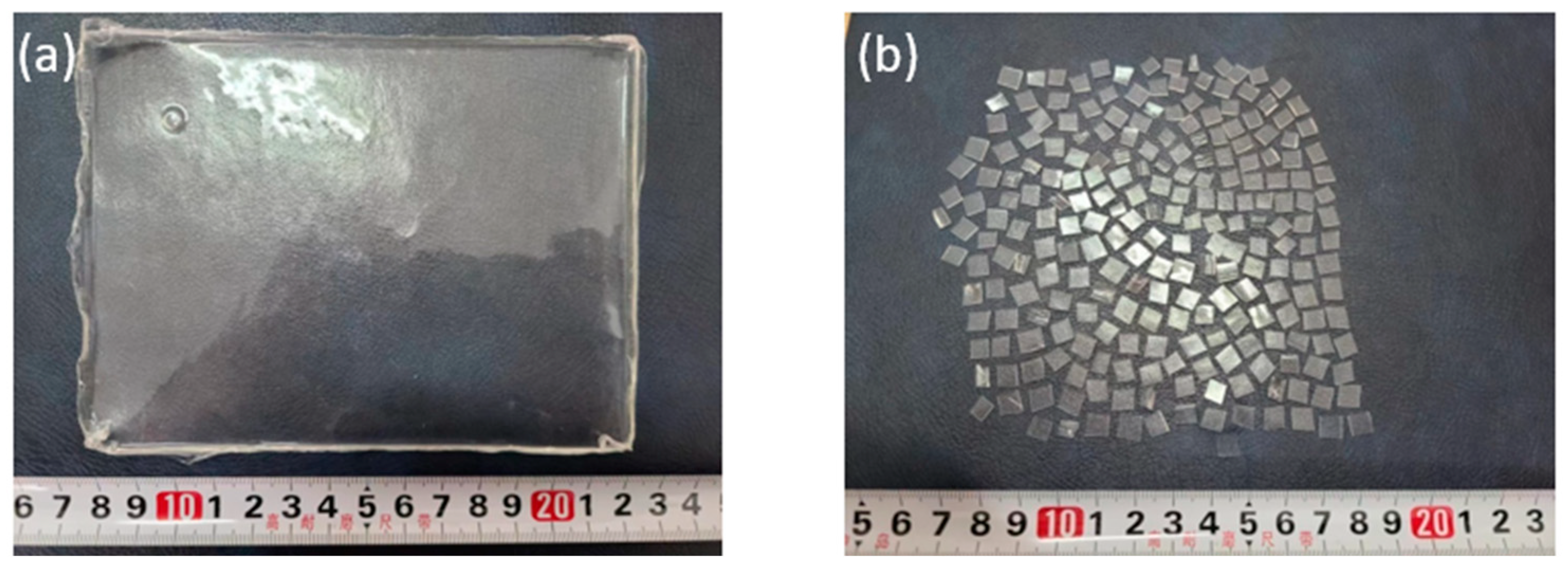


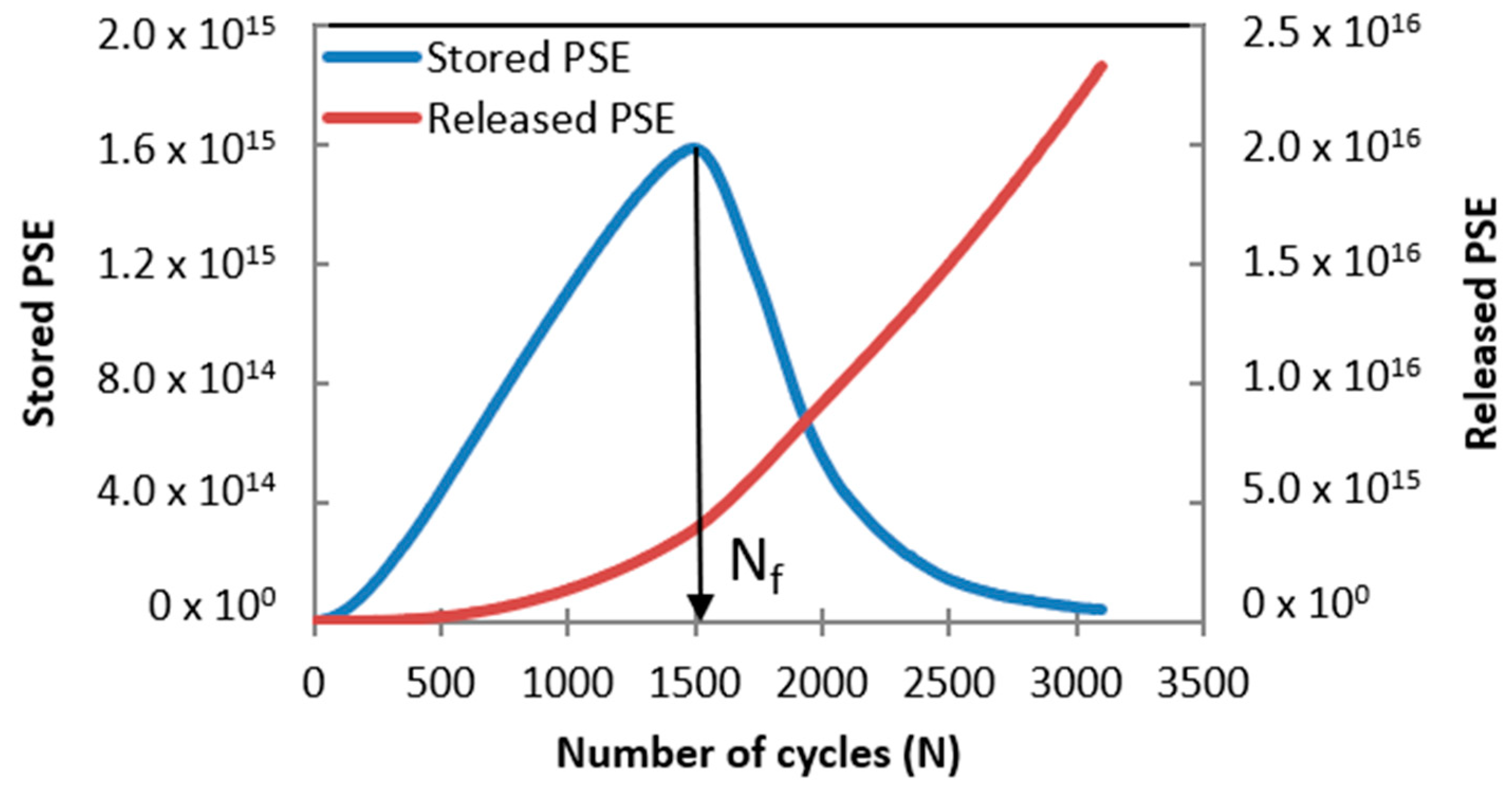

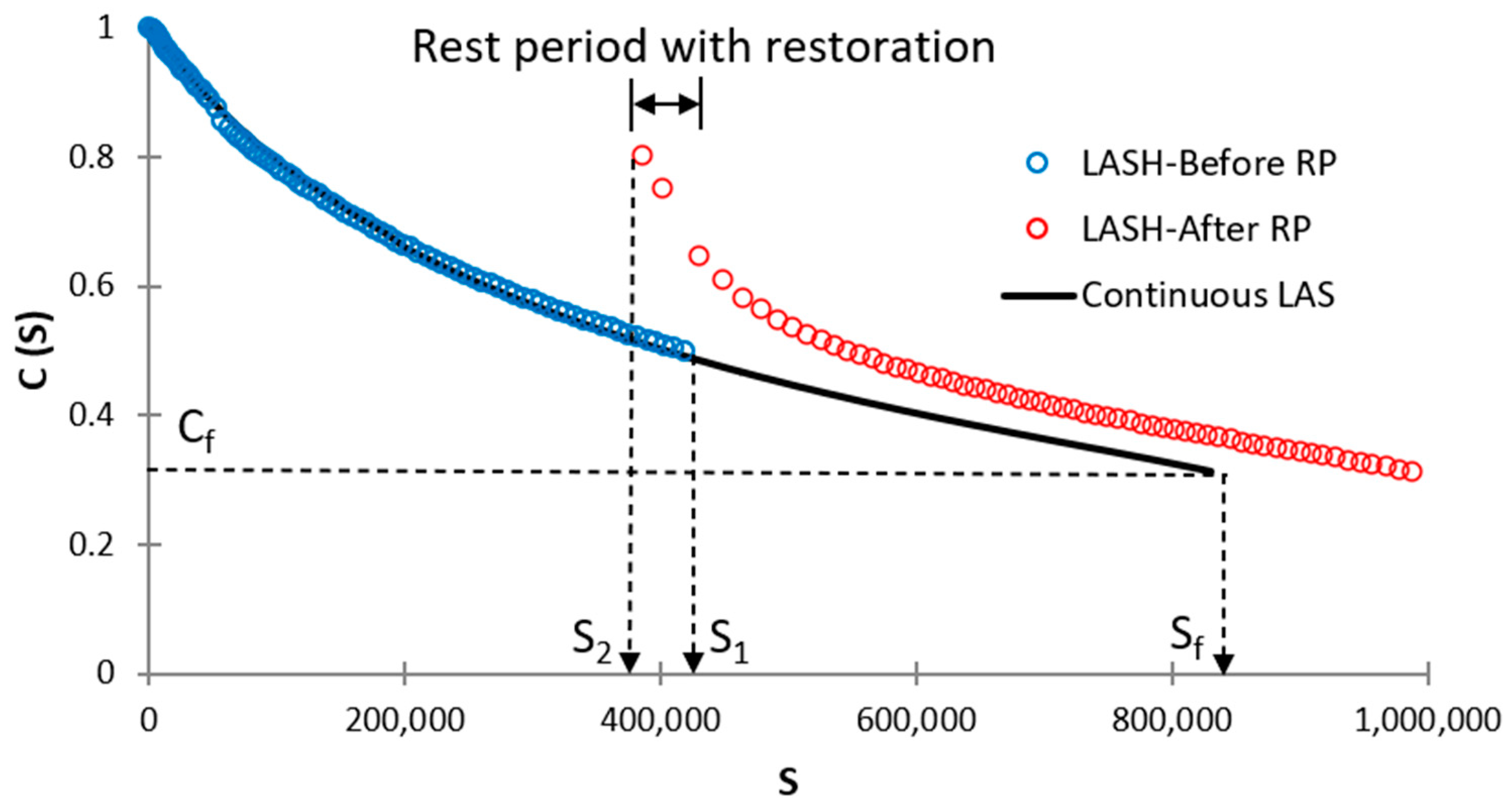

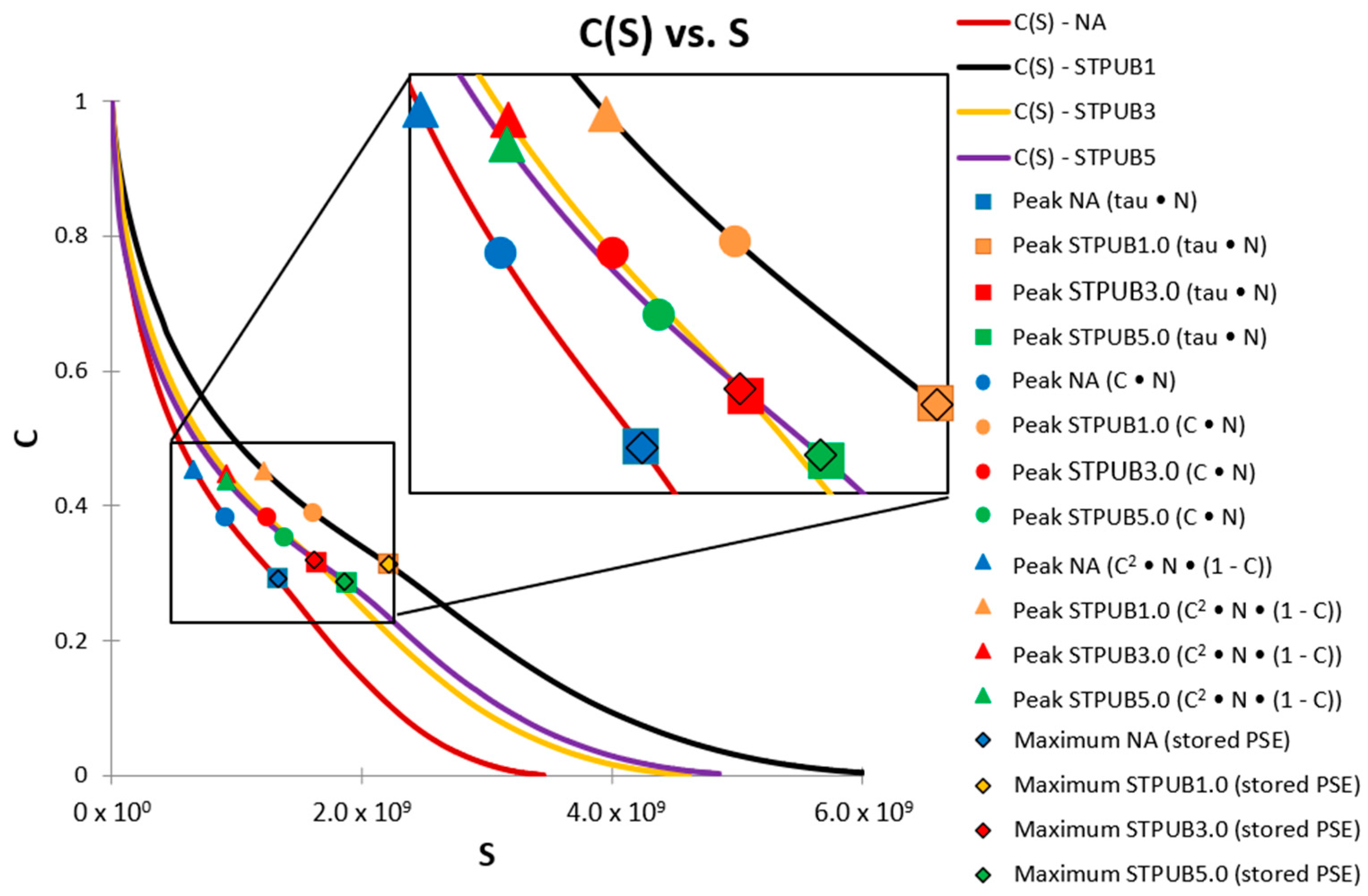


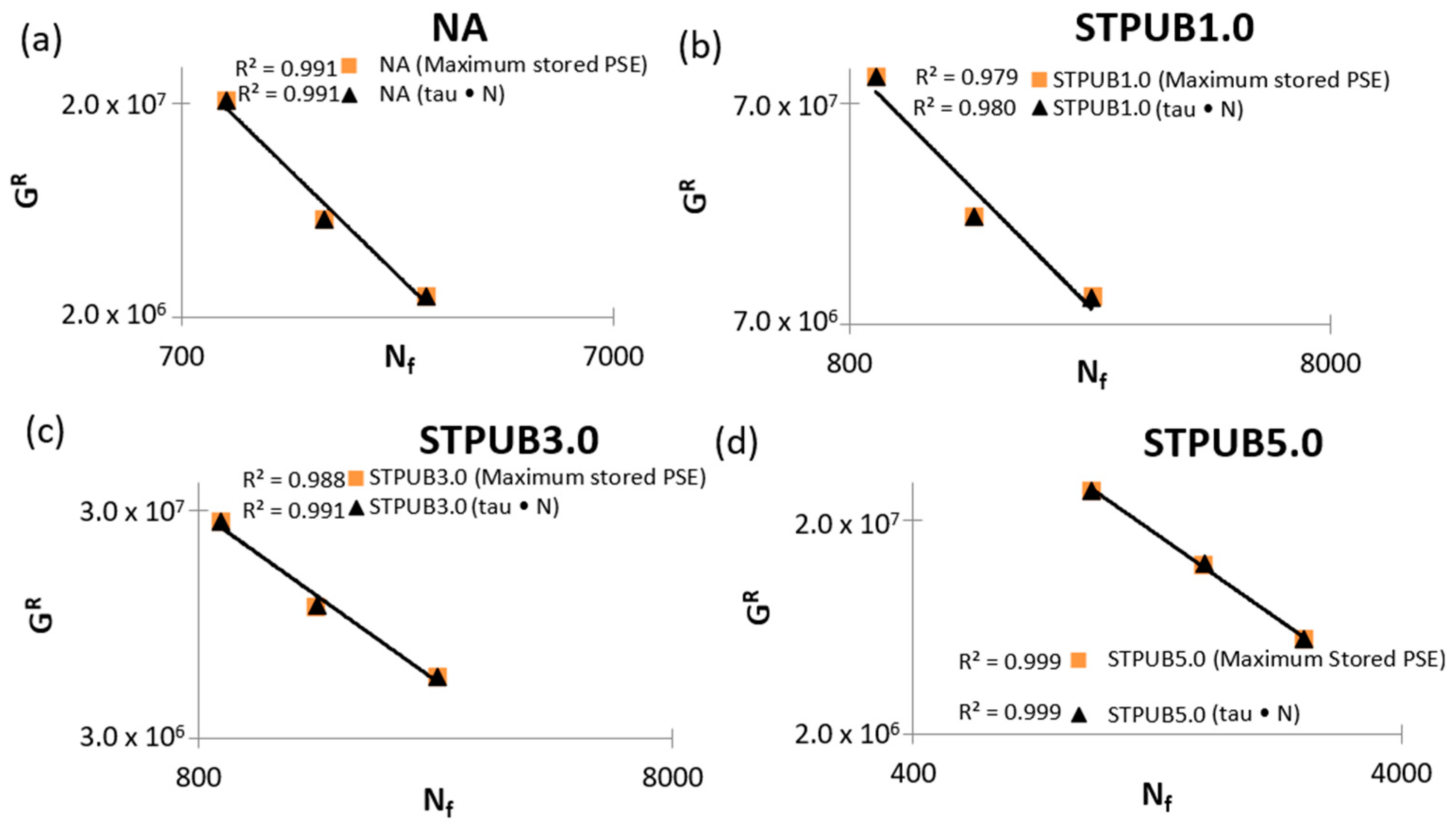

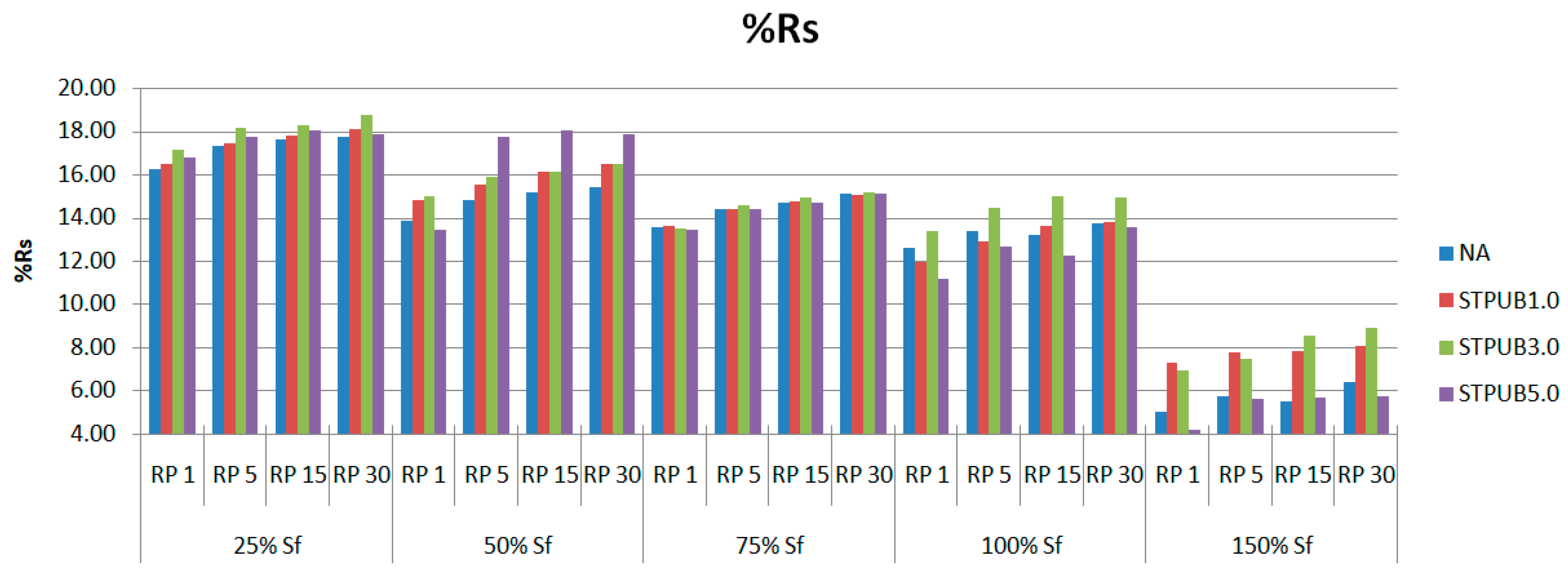

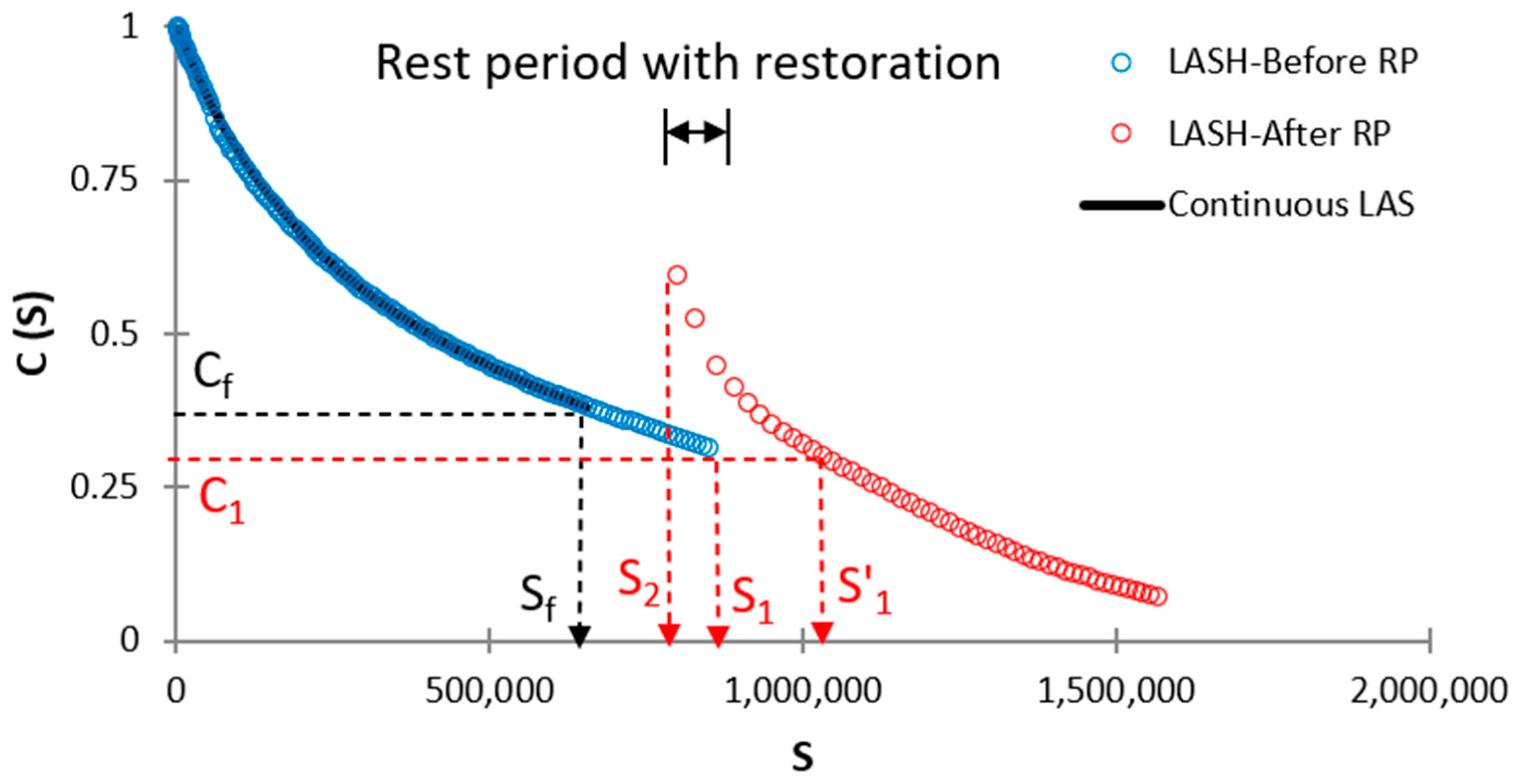
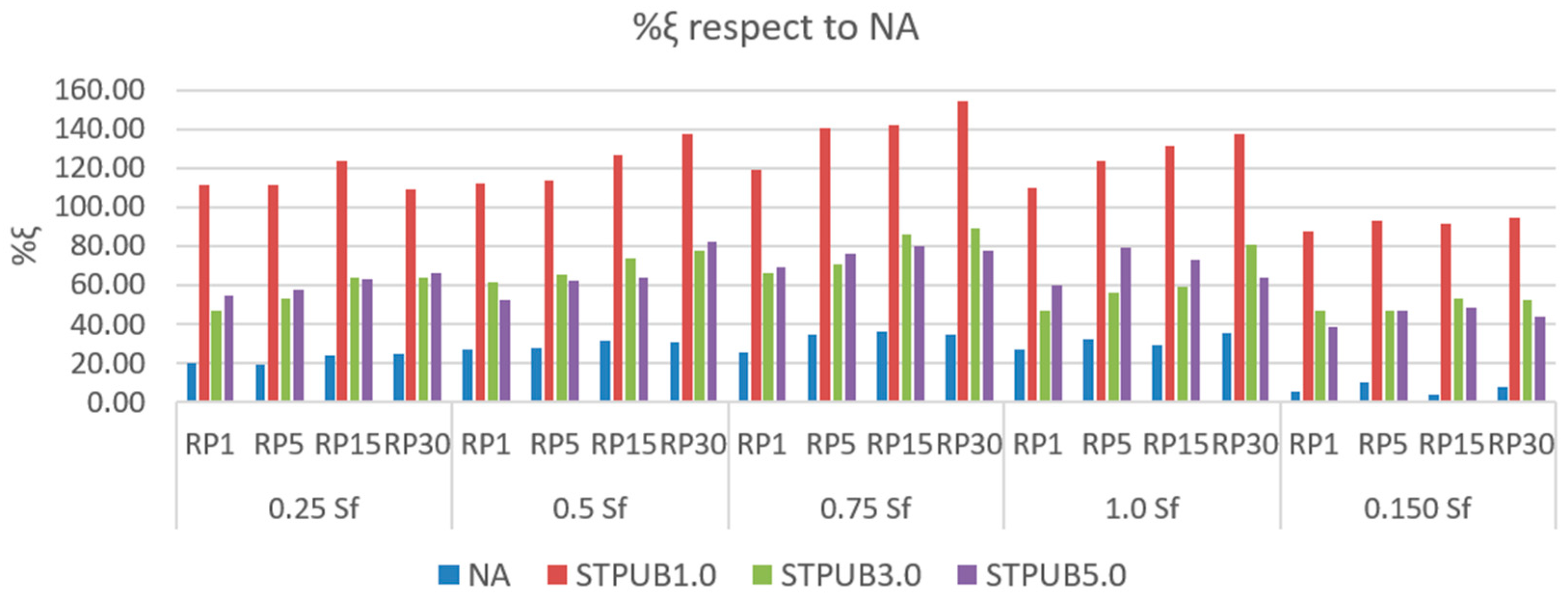
| Test | Standard Value | Measured Value | Standard Test * |
|---|---|---|---|
| Penetration (25 °C, 5 s, 100 g) (0.1 mm) | 60~80 | 60.1 | T0604 |
| PI | −1.5~1.0 | −0.49 | T0604 |
| Softening point (°C) | ≥46 | 51.1 | T0606 |
| Viscosity (60 °C) (Pa·s) | ≥180 | 219 | T0620 |
| Ductility (10 °C) | ≥45 | 62 | T0605 |
| Ductility (15 °C) | ≥100 | 115.1 | T0605 |
| Wax content (%) | ≤2.2 | 1.8 | T0615 |
| Flash point (°C) | ≥260 | 300 | T0611 |
| Density (15 °C) (g/cm3) | - | 1.033 | T0603 |
| After RTFO: | |||
| Mass change (%) | ≤±0.8 | 0.021 | T0609 |
| Residual penetration ratio (%) | ≥61 | 67 | T0604 |
| Residual ductility (10 °C) | ≥0.6 | 8 | T0605 |
| Parameters | STPU Values |
|---|---|
| Tensile strength (MPa) | 13.5 ± 2.2 |
| Elongation [dried state] (%) | 1460 ± 87 |
| Density (g/cm3) | 1.07 |
| Melting point (°C) | 120 a |
| Material Information | Aging Condition | Test Description | Note |
|---|---|---|---|
| NA, STPUB1.0, STPUB3.0, STPUB5.0 | PAV | 1- LAS *: CSR ≈ 0.01%/cycle, 25 °C | To assess the effectiveness of failure definition |
| NA | PAV | 2- LAS: CSR ≈ 0.01%/cycle, 25 °C CSR ≈ 0.005%/cycle, 25 °C CSR ≈ 0.02%/cycle, 23 °C | To assess the effectiveness of failure definition and failure criterion. |
| STPUB1.0 | PAV | 3- LAS: CSR ≈ 0.01%/cycle, 25 °C CSR ≈ 0.005%/cycle, 25 °C CSR ≈ 0.02%/cycle, 23 °C | To assess the effectiveness of failure definition and failure criterion. |
| STPUB3.0 | PAV | 4- LAS: CSR ≈ 0.01%/cycle, 25 °C CSR ≈ 0.005%/cycle, 27 °C CSR ≈ 0.02%/cycle, 25 °C | To assess the effectiveness of failure definition and failure criterion. |
| STPUB5.0 | PAV | 5- LAS: CSR ≈ 0.01%/cycle, 25 °C CSR ≈ 0.005%/cycle, 23 °C CSR ≈ 0.02%/cycle, 27 °C | To assess the effectiveness of failure definition and failure criterion. |
Disclaimer/Publisher’s Note: The statements, opinions and data contained in all publications are solely those of the individual author(s) and contributor(s) and not of MDPI and/or the editor(s). MDPI and/or the editor(s) disclaim responsibility for any injury to people or property resulting from any ideas, methods, instructions or products referred to in the content. |
© 2023 by the authors. Licensee MDPI, Basel, Switzerland. This article is an open access article distributed under the terms and conditions of the Creative Commons Attribution (CC BY) license (https://creativecommons.org/licenses/by/4.0/).
Share and Cite
Lv, S.; Ge, D.; Wang, Z.; Wang, J.; Liu, J.; Ju, Z.; Peng, X.; Fan, X.; Cao, S.; Liu, D.; et al. Performance Assessment of Self-Healing Polymer-Modified Bitumens by Evaluating the Suitability of Current Failure Definition, Failure Criterion, and Fatigue-Restoration Criteria. Materials 2023, 16, 2488. https://doi.org/10.3390/ma16062488
Lv S, Ge D, Wang Z, Wang J, Liu J, Ju Z, Peng X, Fan X, Cao S, Liu D, et al. Performance Assessment of Self-Healing Polymer-Modified Bitumens by Evaluating the Suitability of Current Failure Definition, Failure Criterion, and Fatigue-Restoration Criteria. Materials. 2023; 16(6):2488. https://doi.org/10.3390/ma16062488
Chicago/Turabian StyleLv, Songtao, Dongdong Ge, Ziyang Wang, Jinping Wang, Jing Liu, Zihao Ju, Xinghai Peng, Xiyan Fan, Shihao Cao, Dingyuan Liu, and et al. 2023. "Performance Assessment of Self-Healing Polymer-Modified Bitumens by Evaluating the Suitability of Current Failure Definition, Failure Criterion, and Fatigue-Restoration Criteria" Materials 16, no. 6: 2488. https://doi.org/10.3390/ma16062488
APA StyleLv, S., Ge, D., Wang, Z., Wang, J., Liu, J., Ju, Z., Peng, X., Fan, X., Cao, S., Liu, D., Zhang, W., & Borges Cabrera, M. (2023). Performance Assessment of Self-Healing Polymer-Modified Bitumens by Evaluating the Suitability of Current Failure Definition, Failure Criterion, and Fatigue-Restoration Criteria. Materials, 16(6), 2488. https://doi.org/10.3390/ma16062488









